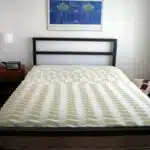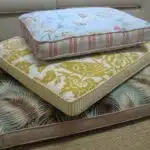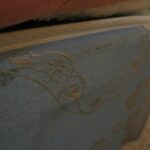As an expert in bed repair, I have encountered numerous cases of squeaky beds. A squeaky bed can be a major source of annoyance and discomfort, disrupting sleep and causing unnecessary stress. It is important to diagnose the root cause of the issue and implement effective solutions to fix the problem.
In this article, I will provide step-by-step instructions on how to fix a squeaky bed. From identifying the source of the noise to implementing appropriate repairs, readers will learn essential techniques for restoring their beds to a peaceful and comfortable state. With these tips, anyone can become a master at fixing squeaky beds and enjoy restful nights of sleep once again.
Understanding The Anatomy Of A Bed
A bed is like a sanctuary. It’s where we rest after a long day, where we find comfort and solace in the arms of our dreams. But it’s not just a piece of furniture; it’s an intricate assembly of various components that work together to offer support and comfort. To understand how to fix a squeaky bed, one must first understand the anatomy of a bed.
Choosing bed materials is crucial when it comes to building a sturdy foundation for your bed. The type of wood used in your bed frame can make all the difference in its longevity, with hardwoods such as oak and maple being the most durable. The mattress also plays a vital role in determining how comfortable your bed will be. A firm mattress provides better support for those who need it, while a soft mattress offers more cushioning for those who prefer plushness.
The benefits of a firm vs. soft mattress are subjective and depend on personal preference. If you suffer from back pain or need extra support due to health issues, a firmer mattress may be more suitable for you. However, if you prefer sinking into your bed and feeling enveloped by softness, then a softer mattress may be ideal. Understanding these factors can help you make informed decisions when selecting materials for your bed frame and choosing the right type of mattress for your needs.
With this knowledge at hand, identifying the source of the squeak becomes much easier.
Identifying The Source Of The Squeak
A squeaky bed can be quite frustrating, especially when it disrupts your sleep. Before you can fix the problem, you need to identify the source of the noise. Common causes of a squeaky bed include loose joints, worn-out mattress support, and a damaged frame.
Loose joints often occur in older beds or those that have been frequently moved. This is because over time, screws and bolts can become loose due to repeated use or shifting of weight on the bed. To check for this issue, start by tightening any visible screws or bolts on the bed frame. If that doesn’t work, try adding more screws to reinforce weak areas.
Worn-out mattress support is another common cause of a squeaky bed. This happens when your mattress loses its shape and no longer fits snugly into the frame. Prevention tips for this issue include regularly rotating your mattress and investing in a high-quality foundation that provides adequate support.
- Check for loose screws and tighten them as needed
- Reinforce weak areas with additional screws
- Rotate your mattress regularly
- Invest in a high-quality foundation for proper support
- Use felt pads between metal parts to reduce friction
Identifying the source of a squeaky bed can be challenging but not impossible. By checking for loose joints and ensuring that your mattress is properly supported, you can eliminate some common causes of squeaks. In the next section, we will discuss how to check your bed frame for damage as this could also be contributing to the problem.
Checking The Frame For Damage
- The first step in checking for damage to a bed frame is to visually examine it for any abnormalities.
- It is important to check for any loose bolts that may have come undone to ensure the frame is securely fastened together.
- Once the bolts have been checked, look for any cracks or breaks in the frame that may need to be addressed.
- Cracks can indicate structural damage to the frame, so it is important to inspect them closely.
- If any cracks are found, they should be filled with a wood putty and then resecured with bolts to ensure the frame is stable.
- After the frame has been inspected and repaired, it should be tested to make sure it is no longer squeaking.
Examine Bed Frame
A squeaky bed can be a source of frustration and poor sleep quality. The first step in fixing a squeaky bed is to examine the bed frame for damage. This involves examining joints and reinforcing weak spots.
To examine the joints, start by checking the screws and bolts that hold the frame together. Tighten any loose screws or bolts with a wrench or screwdriver. If any screws are missing, replace them with new ones of the same size and material. Additionally, check for any cracks or splits in the wood or metal frame. These can be reinforced using wood glue or metal brackets.
Reinforcing weak spots in the bed frame is crucial to prevent future squeaking. Common weak spots include where the legs attach to the frame, as well as areas where there may be excessive wear and tear. Reinforcement methods include adding extra screws or bolts, using metal brackets, or even replacing parts of the frame entirely if needed. By thoroughly examining and reinforcing your bed frame, you can ensure a good night’s sleep without any annoying squeaks keeping you up at night.
Check For Loose Bolts
Regular maintenance is essential to ensure the optimal function of your bed frame. Checking for loose bolts is one of the crucial steps in maintaining a sturdy bed frame. Loose bolts are often caused by regular use or inadequate installation, leading to squeaking and instability. Neglecting this issue may lead to further damage, compromising the stability of your bed.
To check for loose bolts, start by examining all joints and connections on your bed frame. Using a wrench or screwdriver, tighten any loose bolts firmly. If you encounter severely damaged or stripped bolts, replace them immediately with new ones of the same size and material. It is recommended to conduct this maintenance regularly to prevent any future issues from arising.
In summary, checking for loose bolts is an important step in maintaining a stable and squeak-free bed. Regular maintenance can help you identify issues before they become more severe and costly to repair. By staying vigilant and conducting proper care, you can enjoy a peaceful night’s sleep without worrying about discomfort caused by squeaky or unstable frames.
Inspect For Cracks
As a bed repair expert, it is essential to conduct regular check-ups on your bed frame to maintain its optimal function. Checking for loose bolts is an essential step in maintaining a stable and squeak-free bed. However, it is not the only thing that you should be vigilant about when conducting maintenance checks.
One of the critical things to inspect when checking the frame for damage is any common cracks. Common cracks occur due to regular usage or improper installation, leading to instability and discomfort when sleeping. Inspect all joints and connections on your bed frame carefully for any visible cracks. If you detect any cracks, address them immediately using appropriate repair techniques such as wood glue or metal welding.
Neglecting this issue may lead to further damage, compromising the stability of your bed and even causing injuries while sleeping. Therefore, inspecting for cracks should be part of your regular maintenance routine to prevent any future issues from arising. By staying vigilant and conducting proper care, you can enjoy a peaceful night’s sleep without worrying about discomfort caused by unstable frames with common cracks.
Tightening Loose Screws And Bolts
To address a squeaky bed, one must assess and troubleshoot the issue before taking action. Tightening loose screws and bolts is a common solution to this problem. However, it is important to use the proper tools and tightening technique to ensure that the repair is effective.
Before tightening any screws or bolts, it is essential to identify which ones are causing the noise. It may be helpful to have a partner help you push down on different areas of the bed while you listen for where the sound is coming from. Once identified, make sure you have the appropriate tools for tightening. Using the wrong tool can damage the screw or bolt and make matters worse.
When tightening screws and bolts, it is crucial to use an appropriate technique. Over-tightening can strip threads or cause other damage, while under-tightening will not fix the issue at hand. We recommend using a torque wrench to ensure that each screw or bolt is tightened to its proper specifications. This will not only fix your squeaky bed but also prevent further damage from occurring.
| Type of Tool | Proper Use |
|---|---|
| Phillips Head Screwdriver | For Phillips head screws |
| Flathead Screwdriver | For flathead screws |
| Adjustable Wrench | For hexagonal nuts and bolts |
Now that we have covered how to properly tighten loose screws and bolts in your bed frame, let’s move on to lubricating metal parts. By following these steps, you can eliminate annoying noises in your bed and enjoy peaceful slumber once again.
Lubricating Metal Parts
- Identifying metal parts in a bed frame is essential to properly lubricating it.
- Before applying lubricant to the bed frame, it is important to ensure the metal parts are correctly identified.
- The most common lubricant used for metal parts is silicone-based lubricant, as it does not easily break down due to heat and moisture.
- It is important to apply the lubricant to the metal parts evenly and in thin layers to ensure that it does not accumulate in any one area.
Locating Metal Parts
Are you tired of waking up in the middle of the night to the sound of your bed squeaking? You’re not alone. One of the most common causes of a squeaky bed is metal parts that need lubrication. Before applying any lubricants, it’s crucial to locate all metal parts that require maintenance.
Metal part maintenance is essential for preventing metal corrosion and prolonging the life of your bed. Begin by inspecting all visible metal parts, such as bolts and screws on the frame, headboard, and footboard. Don’t forget to check under the bed for any hidden metal components that may be causing the noise. Once you’ve located all areas requiring attention, use a flashlight to examine each piece closely. Check for rust or other signs of wear and tear that could indicate that replacement is necessary.
After identifying which metal parts are causing your bed to squeak, it’s time to lubricate them properly. Use a silicone-based spray or oil-based lubricant designed explicitly for metal surfaces. Avoid using WD-40 or other types of sprays since they could attract dirt and dust over time, making your bed even noisier than before. Apply the lubricant sparingly but thoroughly, ensuring that each joint or hinge receives an adequate amount for proper operation.
In conclusion, locating metal parts is an essential step in maintaining a quiet and comfortable bed. By checking for rust or other wear and tear signs first before applying any lubricants, you can prevent further damage to your furniture while prolonging its lifespan. Remember always to use appropriate products specifically formulated for metal surfaces when lubing each component; this will help keep your bed silent and functional for years to come without causing any harm from harsh chemicals or improper application methods!
Applying Lubricant
After locating the metal parts that need maintenance, it’s time to apply lubricant. Choosing the right lubricant is crucial since using the wrong type can attract dirt and dust over time, making your bed even noisier. Silicone-based sprays or oil-based lubricants are ideal for metal surfaces like those found in bed frames since they effectively reduce friction and noise without causing any harm.
Before applying any lubricant, make sure you do so without making a mess. It’s best to have a rag or towel on hand to clean up any excess product that may drip or spill. Apply the lubricant sparingly but thoroughly, ensuring that each joint or hinge receives an adequate amount for proper operation. Be sure to avoid spraying directly onto the mattress or linens to prevent staining.
Properly lubricating your bed’s metal parts is an essential step in maintaining a quiet and comfortable sleeping environment. By choosing the right lubricant and applying it correctly, you can prevent further damage to your furniture while prolonging its lifespan. With these tips in mind, you’ll be able to enjoy a peaceful night’s sleep without having to worry about waking up to a squeaky bed!
Replacing Worn-Out Springs
After lubricating the metal parts of your bed, you may find that the squeaking persists. This indicates that the issue may be with the springs inside your bed frame. Replacing worn-out springs is an effective way to eliminate squeaks and ensure a comfortable sleep experience.
When should you consider replacing your bed springs? If your bed is more than 7-8 years old, it’s likely time to replace the springs. Additionally, if you notice visible wear or damage to the springs, such as rust or bending, it’s crucial to replace them immediately. You can hire a professional to perform this task for you, or you can choose to do it yourself if you’re comfortable working with tools and have some knowledge of basic carpentry.
There are two main types of bed springs: coil and pocketed. Coil springs are most commonly found in traditional box spring mattresses and consist of rows of interconnected metal coils. Pocketed springs are individually wrapped in fabric pockets and offer more personalized support for sleepers. When deciding which type of spring is best for your bed, consider factors such as comfort level, budget, and durability. A bed repair expert can help guide you in making the best decision for your needs.
As important as replacing worn-out springs is adjusting the slats on which they rest. This ensures that there is proper support for both the mattress and sleeper. In our next section, we will discuss how to adjust slats on different types of bed frames to provide optimal support for a good night’s sleep.
Adjusting The Slats
Symbolism can be a powerful tool to understand the importance of slats in bed frames. Just as a spine supports the human body, slats provide support for mattresses. When the spacing between slats is incorrect or they are not properly aligned, your bed will squeak and creak with every movement. Fortunately, adjusting the slat spacing is an easy fix that requires minimal effort.
To adjust the spacing between slats, start by removing them from the frame carefully. Once you remove all of them, measure their width and calculate how many you need to add or remove to achieve optimal spacing. Depending on your bed frame’s design, you may be able to use connectors to secure and align the slats correctly.
Here are three steps to follow when adjusting your bed’s slat spacing:
- Measure the width of each existing slat.
- Calculate how many additional or fewer slats you need to achieve optimal spacing.
- Use connectors if necessary to secure and align the new or repositioned slats.
By following these steps, you can eliminate squeaks caused by unevenly spaced or incorrectly positioned slats. In addition to adjusting your bed’s slat spacing, adding support under your mattress can also help reduce noise and improve overall sleep quality.
Adding Support To The Mattress
One effective way to fix a squeaky bed is to add support to the mattress. This is a crucial step in ensuring that the bed frame and the mattress work together harmoniously, preventing any unwanted noise. There are several mattress support alternatives available, including adding plywood or slats underneath the mattress.
If your bed frame already has slats, but they are causing the squeaking noise, you can try reinforcing them with additional wood screws or brackets. Alternatively, you can replace the slats with stronger ones or add more of them for extra support. If you prefer a DIY fix, you can cut a piece of plywood to fit your bed frame and place it on top of the existing slats.
Another option for adding support to the mattress is by using adjustable bed risers. These devices can be placed under each corner of the bed frame and adjusted to different heights, allowing you to customize the level of support required for your mattress. Keep in mind that this method may not be suitable for all types of beds.
As mentioned earlier, adding support to the mattress is an effective solution for fixing a squeaky bed. However, if this method does not work for your specific situation, there are other solutions available such as using anti-squeak kits. These kits often include specialized hardware such as rubber washers or plastic clips that help absorb vibrations and reduce noise caused by movement in your bed frame.
Using Anti-Squeak Kits
Are you tired of being woken up by a squeaky bed every time you roll over at night? If so, you may be wondering what options are available to fix this problem. One solution is to use an anti-squeak kit, which contains everything you need to silence your noisy bed.
There are two main approaches to fixing a squeaky bed: DIY or professional. While some people prefer to tackle the project themselves, others may feel more comfortable hiring a professional to do the job. When it comes to using an anti-squeak kit, both options are available. However, if you choose to hire a professional, be prepared for a higher cost compared to doing it yourself.
Anti-squeak kits have been proven effective in silencing beds that make noise due to loose joints or worn out hardware. Before purchasing a kit, it’s important to read reviews and compare prices from different manufacturers. Some kits may work better than others depending on the type of bed you have and the severity of the noise issue. With proper installation, an anti-squeak kit can provide long-lasting relief from your noisy bed and improve your overall quality of sleep.
Moving onto the next solution – applying adhesive pads – let’s explore how this simple yet effective method can help reduce the squeaking sound coming from your bed frame.
Applying Adhesive Pads
To apply adhesive pads, it’s important to first prepare the surface of your bed frame. Begin by removing any residue from previous adhesives or stickers. This can be done using rubbing alcohol or a gentle adhesive remover. Be sure to let the surface dry completely before proceeding to the next step.
When choosing an adhesive pad, it’s important to consider the weight and size of your bed. Look for pads that are specifically designed for furniture and can support the weight of your bed without slipping. It’s also important to choose pads that are easy to remove in case you need to make adjustments in the future.
To apply the pads, carefully peel off the backing and place them in the desired location on your bed frame. Apply pressure with your hands to ensure a strong bond between the pad and frame. Repeat this process for each corner of the bed frame. Once all pads are securely in place, test out your bed by gently rocking it back and forth. If there is still squeaking, move on to inserting shims as a next step.
Transition: Now that you’ve applied adhesive pads, it’s time to move on to inserting shims as another possible solution for fixing a squeaky bed.
Inserting Shims
When attempting to fix a squeaky bed using shims, it is important to make the right choice of shim material and size. Proper shim insertion is also essential in order to effectively reduce squeaking, as incorrect installation can cause further damage to the bed frame. Wood shims are the most common shim material used, as they are reliable and easy to cut. When inserting shims, it is important to make sure that they fit tightly between the bed frame and the bed post in order to eliminate any movement and reduce squeaking.
Choosing The Right Shims
As a bed repair expert, I understand the frustration that comes with a squeaky bed. One of the most effective ways to fix this issue is by inserting shims between the frame and the mattress support. However, choosing the right shims is crucial for a successful outcome.
The first factor to consider when selecting shims is material options. Wood and plastic are two common choices. Wood shims are durable and offer excellent support for heavier mattresses but may compress over time. On the other hand, plastic shims are resistant to compression but may not be suitable for heavy-duty beds. It’s important to evaluate your bed’s weight capacity before choosing a shim material.
Thickness variations also play a role in choosing the right shim. Thicker shims are ideal for larger gaps between the frame and mattress support, while thinner ones work best for smaller gaps. Additionally, thicker shims provide more stability and reduce noise compared to their thinner counterparts.
By considering these factors, you can choose the right shim material and thickness variation that will effectively eliminate any squeaks in your bed. Remember to measure carefully before purchasing shims to ensure they fit correctly and provide adequate support for your mattress.
Inserting Shims Properly
When it comes to fixing a squeaky bed, inserting shims is an effective solution. However, proper shim placement is crucial for optimal results. As a bed repair expert, I recommend taking the following steps to ensure that shims are inserted correctly.
Firstly, when determining where to place the shims, examine your bed’s frame and mattress support. You want to place the shims in areas where there is noticeable space between the two components. If you’re unsure of where these gaps may be located, consider moving or adjusting your mattress support to identify any problem areas.
Once you have identified where the shims need to go, it’s important to use materials that will provide adequate support for your mattress. As previously discussed, wood and plastic are common options for shim materials. Regardless of what material you choose, make sure it is thick enough to reduce noise and provide stability while not compressing over time. Additionally, ensure that each shim is placed flush with the frame and mattress support so that they don’t shift or cause further issues.
By following these guidelines for proper shim placement and selecting appropriate materials for shims, you can effectively eliminate any unwanted noise from your bed. Remember, always measure carefully before purchasing shims and take note of any weight limitations on your bed’s frame and mattress support before proceeding with repairs.
Replacing The Bed Altogether
After inserting shims and trying other DIY solutions, you may find that the squeak in your bed persists. In this case, it may be time to consider replacing the bed altogether. Just as a car with high mileage will eventually need to be replaced, a bed that has served you well for many years may simply be reaching the end of its lifespan.
When bed shopping, there are several budget considerations to keep in mind. While it can be tempting to choose the cheapest option available, keep in mind that a good quality bed is an investment in your health and well-being. Look for beds made from high-quality materials that will last longer and provide better support. Consider the warranty offered by the manufacturer, as well as any return or exchange policies.
Ultimately, if you are not confident in your ability to replace your bed on your own, it may be best to hire a professional repair service. A skilled technician can help you choose a new bed that meets your needs and budget, and ensure that it is properly installed for maximum comfort and longevity. By investing in professional services now, you can enjoy a good night’s sleep for years to come without having to worry about squeaking or other issues.
Hiring A Professional Repair Service
If you don’t have the time or the inclination to fix your squeaky bed yourself, hiring a professional repair service may be the best option for you. There are pros and cons to this approach, however. On the one hand, professional repair services are likely to have more experience and expertise than the average person when it comes to fixing beds. They will also have access to specialized tools and equipment that can make the job easier and more efficient.
On the other hand, hiring a professional repair service can be expensive. Depending on where you live and what kind of service you need, you could end up paying hundreds of dollars for someone else to fix your bed for you. Additionally, there is always the risk that something could go wrong during the repair process, which could end up causing even more damage to your bed.
Before deciding whether or not to hire a professional repair service, it’s important to weigh all of these factors carefully. Consider how much money you’re willing to spend on repairs, as well as how much time and effort you’re willing to invest in finding a reputable repair service in your area. Once you’ve done this cost comparison, you should be able to make an informed decision about whether or not hiring a professional is the right choice for you.
Looking ahead, preventing future squeaks can be done in several ways. These include regularly tightening bolts and screws on your bed frame, using lubricants like WD-40 on parts that tend to rub together and cause noise, and making sure that your mattress is properly supported by its foundation or box spring. By taking these steps proactively, you can help ensure that your bed stays quiet and comfortable for years to come.
Preventing Future Squeaks
- Lubrication is an important factor in preventing future squeaks from a bed frame, as it reduces the friction between the bed frame and the bed slats.
- It is important to select a lubricant that is compatible with the bed frame material, such as a silicone based lubricant for metal frames and a wax based lubricant for wooden frames.
- Ensuring that the mattress has adequate support is another important factor when trying to prevent future squeaks.
- This can be achieved by adding extra slats or by replacing worn or broken slats if the bed frame is designed to have them.
Lubrication
To prevent future squeaks in your bed, lubrication is the key. The best lubricants for beds are silicone spray, WD-40, and powdered graphite. Silicone spray is a popular choice because it is easy to use and does not leave any residue. WD-40 is also effective but may leave a greasy film on your bed frame. Powdered graphite can be messier to apply but provides long-lasting lubrication.
Applying lubricant to your bed requires specific techniques to ensure maximum effectiveness. First, remove any bedding and mattress from the bed frame, so you have access to all parts of the frame. Then, use a cloth or paper towel to clean any dirt or debris from the joints and areas where the bed frame rubs together. Next, apply the lubricant sparingly and evenly along these areas.
In conclusion, lubrication is an essential step in preventing future squeaks in your bed. By using the best lubricants like silicone spray, WD-40, or powdered graphite and applying them correctly using proper techniques, you can keep your bed quiet and comfortable for years to come. Don’t wait until you hear another annoying squeak; take proactive steps today to maintain your peaceful sleep environment!
Mattress Support
When it comes to preventing future squeaks in your bed, lubrication is not the only solution. Mattress support plays a critical role in keeping your bed quiet and comfortable. A sagging or worn-out mattress can cause noise when you move around, which can be frustrating for both you and your partner. Therefore, it is essential to understand how mattress firmness and box spring alternatives affect your bed’s overall support.
Mattress firmness refers to how soft or hard the surface of your mattress feels when you lie down on it. If your mattress is too soft, it may sink in the middle, causing uneven pressure distribution and eventually leading to sagging. On the other hand, if your mattress is too firm, it may not provide enough give for all parts of your body to sink in evenly. The ideal level of firmness depends on personal preference, body weight, and sleeping position.
Box springs are commonly used as a foundation for mattresses because they provide additional support and enhance overall comfort. However, there are alternatives such as platform beds and adjustable bases that can also offer the necessary support without the need for a box spring. These options can be more cost-effective and space-saving than traditional box springs while still providing the same level of stability for your mattress. By considering these factors and choosing the right combination of mattress firmness and support system, you can prevent future squeaks in your bed while creating a comfortable sleeping environment that meets all your needs.
Enjoying A Peaceful Night’s Sleep
A good night’s sleep is essential for a healthy and productive life. However, a squeaky bed can be a significant obstacle to achieving this goal. The constant noise can disrupt your sleep and affect your overall wellbeing. As an expert in bed repair, I understand the importance of enjoying a peaceful night’s sleep. Here are some tips to help you create a relaxing bedroom environment that will promote better sleep.
Firstly, invest in a high-quality mattress and pillows. A comfortable bed is the foundation of a good night’s sleep. Choose a mattress that provides adequate support for your body type and sleeping style. Similarly, select pillows that align with your preferred sleeping position to prevent neck pain or discomfort.
Secondly, address any issues with your bed frame or base. A wobbly or uneven frame can cause unnecessary noise and impact the quality of your sleep. Tighten screws or bolts where necessary, or consider replacing worn-out parts if needed.
Lastly, minimize external factors that may interfere with your restful slumber. Keep electronic devices away from the bedroom as much as possible and use blackout curtains to block out light pollution. Consider using aromatherapy candles or diffusers to promote relaxation before bedtime.
In summary, creating a peaceful bedroom environment is crucial for achieving optimal rest and rejuvenation during sleep time. By investing in quality bedding materials, addressing any issues with bed frames or bases, and minimizing external disruptions such as light pollution or digital distractions, you can enjoy the benefits of good night’s sleep on an ongoing basis.
Conclusion
As a bed repair expert, understanding the anatomy of a bed is crucial when fixing a squeaky bed. Identifying the source of the squeak is the first step, followed by checking for any damage to the frame. Tightening loose screws and bolts can also help alleviate the issue. Lubricating metal parts can reduce friction and noise.
If all else fails, replacing the bed altogether or hiring a professional repair service may be necessary. Preventing future squeaks can be achieved by regularly inspecting and maintaining your bed.
Ironically, as much as we invest in our beds for comfort and restful sleep, it seems that they often betray us with annoying squeaks. However, taking care of our beds can go a long way in ensuring peaceful nights of slumber. Remember to address any issues promptly to avoid further damage and inconvenience. As an expert in this field, I encourage everyone to prioritize their sleeping arrangements for optimal wellness and productivity during waking hours.
Image Credits
- “Squeaky struts his stuff on my bed” by Ninithedreamer (featured)



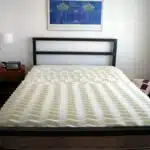





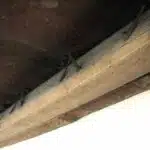


![How To Keep Sheets On A Bed: 10 Strategies 12 Bed sheets [Explored 2013-04-27]](https://green-life.blog/wp-content/uploads/2023/04/pH7FwL8jspjq-150x150.jpg.webp)

